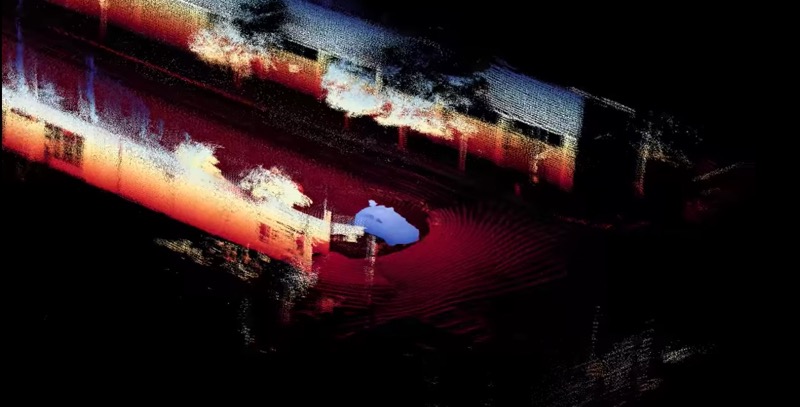You may remember Ouster from the recent announcement of the OS-1-64 lidar, a sensor that costs $16,000, fits in one of the smallest packages available, and features a scalable, proprietary sensor technology. Ouster called it as an effort to take on the dominant suppliers in the autonomous vehicle and multi-purpose lidar market. That challenge continues with the release two new lidar sensors: the even less expensive OS-1-16 and the long-range OS-2.
“We’re taking the promising technology that is embodied in the OS-1-64, and expanding it to a fuller product line that addresses a more diverse customer set,” Ouster CEO and co-founder Angus Pacala told SPAR 3D. “There are always going to be certain customers that have either higher performance needs, or are incredibly price conscious.”
We talked to Pacala about the new sensors, what’s so special about the technology under the hood, and why this proprietary sensor might even solve some challenging sensor fusion problems.
OS-1-16: lower price
Though the OS-1-64 offers a good balance of price and performance, Pacala notes, the sensor is still not affordable for everyone. For these customers, Ouster is releasing the OS-1-16 lidar at a price point of $3,500. With that low cost, and a range resolution of 1.5 cm, Ouster calls it “the ideal tool for drone navigation and surveying.”
The sensor uses the same technology as its big brother, but reduces the number of channels to 16. It offers three different configurations that optimize the sensor for different applications: The 16A has uniform beam spacing over the 31.6° FOV, the 16B offers higher density around the horizon, and the 16C offers higher density below the horizon.
This sensor is already available in limited quantities, with more coming in May 2018.

Demonstrating the use of Ouster sensors for real-time SLAM.
OS-2-64: higher performance
The OS-2-64 uses the same sensor technology as its siblings to offer 64 channels, a range of 200 meters, and beam spacing at 15.8°. The sensor is tailored for use in high-speed autonomous vehicle application such as highway driving.
The increase in distance doesn’t come free: OS-2 is 50% larger than the OS-1. Ouster notes that, despite the improved performance, the OS-2 is still comparable in size to other sensors at the market at 110mm in diameter, 85mm in height, and 600g. It also beats most sensors on the market in price: $24,000 per unit.
Ouster says the sensor will be available in Q3.

Technology that scales, faster development
With these new sensors, Pacala says, Ouster has scaled its existing silicon sensor tech “up and down the market.”
This has an unexpected benefit. Pacala tells SPAR3D that “every time we improve the technology in one of our devices, we’ll be able to push that to all the other products in our portfolio. This is an exciting thing for customers, because it means they’ll see improvement in technology year on year on year, and at a faster rate than before.”
Solving a sensor fusion problem
Ouster’s proprietary silicon-based sensor technology makes it possible for their sensor technology to perform another cool trick: it uses the “uniformity and the quality of the measurements” taken by Ouster’s sensors to output an image that looks like a rectilinear camera image.
I asked Pacala why a user would need this in the age of multi-sensor payloads that usually include a camera designed specifically for this purpose. For one, he says, it gives an option for payloads that “don’t have the luxury of an additional camera.”
However, the critical differentiator is that Ouster’s image “not an ambient-light image, it’s an actively illuminated image—you can think of it as night vision. This is behaving as an active, illuminated, night-vision camera. You could drive with no headlights on and see the same imagery through the device as you would on a sunny day.”
Lastly, Pacala pointed out that calibrating point cloud and image data is still a big challenge. “Everyone does it,” he says, “but that doesn’t mean it’s easy. That’s why it’s good to have very well calibrated camera-like imagery coming off the lidar. It’s directly associated with every depth measurement, so there’s no calibration needed to fuse that data with 3D information.” For another set of customers, he concluces, “it avoids a pretty challenging sensor fusion problem.”
For more information about Ouster’s sensors, see the company’s website here.






